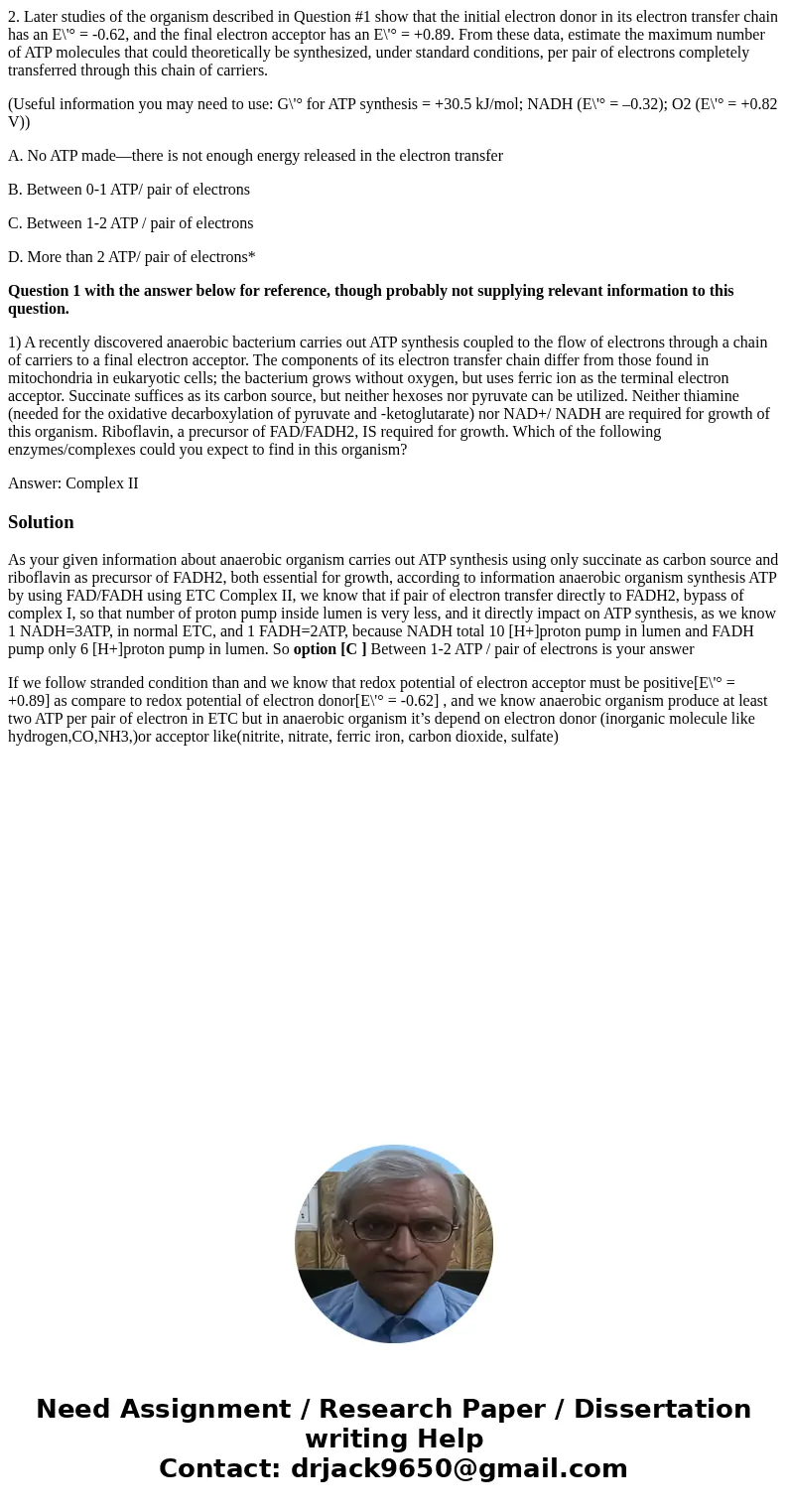2 Later studies of the organism described in Question 1 show
2. Later studies of the organism described in Question #1 show that the initial electron donor in its electron transfer chain has an E\'° = -0.62, and the final electron acceptor has an E\'° = +0.89. From these data, estimate the maximum number of ATP molecules that could theoretically be synthesized, under standard conditions, per pair of electrons completely transferred through this chain of carriers.
(Useful information you may need to use: G\'° for ATP synthesis = +30.5 kJ/mol; NADH (E\'° = –0.32); O2 (E\'° = +0.82 V))
A. No ATP made—there is not enough energy released in the electron transfer
B. Between 0-1 ATP/ pair of electrons
C. Between 1-2 ATP / pair of electrons
D. More than 2 ATP/ pair of electrons*
Question 1 with the answer below for reference, though probably not supplying relevant information to this question.
1) A recently discovered anaerobic bacterium carries out ATP synthesis coupled to the flow of electrons through a chain of carriers to a final electron acceptor. The components of its electron transfer chain differ from those found in mitochondria in eukaryotic cells; the bacterium grows without oxygen, but uses ferric ion as the terminal electron acceptor. Succinate suffices as its carbon source, but neither hexoses nor pyruvate can be utilized. Neither thiamine (needed for the oxidative decarboxylation of pyruvate and -ketoglutarate) nor NAD+/ NADH are required for growth of this organism. Riboflavin, a precursor of FAD/FADH2, IS required for growth. Which of the following enzymes/complexes could you expect to find in this organism?
Answer: Complex II
Solution
As your given information about anaerobic organism carries out ATP synthesis using only succinate as carbon source and riboflavin as precursor of FADH2, both essential for growth, according to information anaerobic organism synthesis ATP by using FAD/FADH using ETC Complex II, we know that if pair of electron transfer directly to FADH2, bypass of complex I, so that number of proton pump inside lumen is very less, and it directly impact on ATP synthesis, as we know 1 NADH=3ATP, in normal ETC, and 1 FADH=2ATP, because NADH total 10 [H+]proton pump in lumen and FADH pump only 6 [H+]proton pump in lumen. So option [C ] Between 1-2 ATP / pair of electrons is your answer
If we follow stranded condition than and we know that redox potential of electron acceptor must be positive[E\'° = +0.89] as compare to redox potential of electron donor[E\'° = -0.62] , and we know anaerobic organism produce at least two ATP per pair of electron in ETC but in anaerobic organism it’s depend on electron donor (inorganic molecule like hydrogen,CO,NH3,)or acceptor like(nitrite, nitrate, ferric iron, carbon dioxide, sulfate)

 Homework Sourse
Homework Sourse